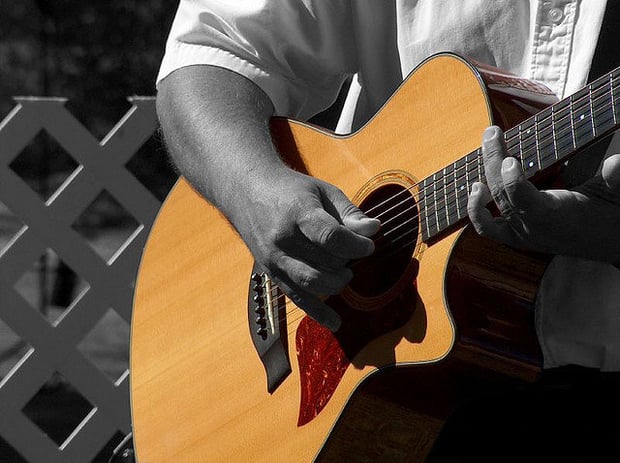 Image via flickr.com
Image via flickr.com
The guitar is a cool instrument. All of the moving parts play a huge role in the sound and performance of the instrument, both on acoustic and electric guitars. Thus, due to its relative ease, many choose to upgrade and modify parts of their guitars, rather than spend lots of money simply buying a new instrument.
When I heard people talk about upgrading their instruments, it's almost always in regard to the pickups or tuning keys. Locking tuners can certainly improve the guitar's intonation (plus, they make it much easier to change strings), and pickups play a huge part in the way the guitar sounds, but both of these upgrades can be costly. As somebody who has modified many guitars, I can say that there are a few simple, affordable parts of the guitar that are often missed, but have a huge influence on the qualities of the guitar. Upgrading these parts will save you money and will likely solve any problems you were having in the first place. Also note that many of these upgrades apply to other stringed instruments as well!
1. Nut
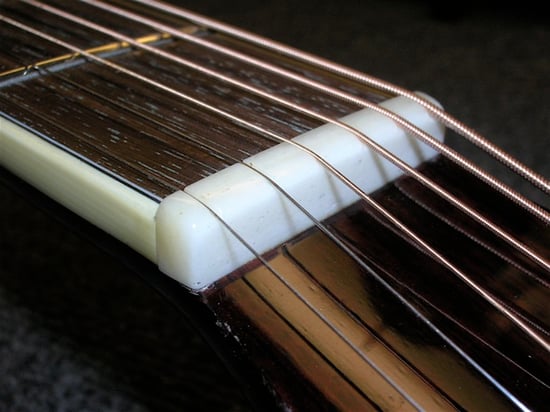 Image via accu-techguitarrepair.com
Image via accu-techguitarrepair.com
The nut is the first thing I upgrade on all of my guitars. Anything that comes into contact with the strings on a guitar will have an influence on its tone and intonation, and the nut is an especially important part of this puzzle.
Oftentimes, guitars ship out with nuts made of plastic or some kind of shoddy synthetic bone. The surfaces of the inside of the nut slots are very hard and abrasive with these materials, and often, you'll hear a little "ping" noise as the string slides around in the slot. This causes the guitar to go out of tune. Replacing the nut with a more slippery material such as graphite or TUSQ (synthetic bone) solves this problem by allowing the strings to slide freely within the nut slot, which drastically improves your guitar's intonation.
There can also be tonal benefits to swapping out your guitar's nut. Certain kinds of bone or brass have their own unique tonal characteristics, and if you upgrade to one of these materials, you may notice a difference in the sound of your instrument.
Whether you do it to improve tone or intonation, consider a $15 to $25 nut upgrade before you reach for the $100 locking tuners or pickups.
2. Saddles
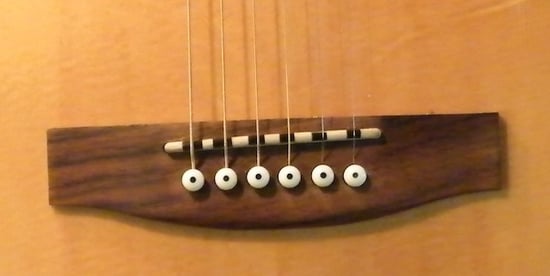 Image via obbligatoinc.com
Image via obbligatoinc.com
The saddles on your guitar's bridge serve essentially the same function as the nut, except that they rest on the opposite end of the guitar. The same problems can plague low-quality bridge saddles; if it's difficult for the strings to move, it will lead to intonation issues. After frequent use, however, players can also develop a burr in their guitars' saddles (when the metal starts to wear down, leaving a sharp edge on the saddle), which will cause strings to break frequently. Though this can be remedied by rubbing some steel wool in the saddle, you may want to consider an upgrade once you have the opportunity. The same tips for nuts can apply to saddles: graphite is incredible when it comes to solving intonation issues, whereas brass can add a certain sweetness to the high end, making the sound of your guitar a little more lively.
Of course, some guitars have a bridge with the saddles directly attached, meaning you would have to upgrade the entire bridge to upgrade the saddles. This is still a worthwhile upgrade that definitely warrants consideration, though it could easily be the same price as buying a decent pair of locking tuning keys.
3. Knobs
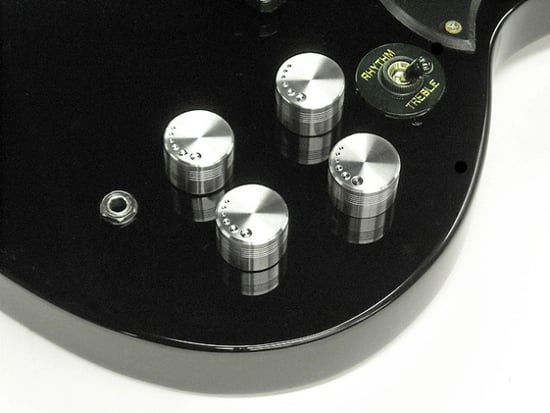 Image via guitar-muse.com
Image via guitar-muse.com
This is something that not a lot of players think about. The knobs on a guitar can be pulled off, put back on, and swapped out with very little effort. And sometimes, changing to a different sort of knob can make a difference.
Do you ever reach for your guitar's volume knob mid-song and find it a little to resistant to your manipulation? Or perhaps it wiggles too freely, and you find yourself bumping it and turning your volume off when you don't mean to? Is it too slippery and difficult to get a grip on? If you're like me and make frequent use of the knobs on your guitars, you've probably encountered these challenges numerous times on various instruments. A set of four replacement knobs would likely cost you $10 at the very most. If you're dealing with any of the above issues, consider trying out a few different kinds and throwing them on your guitar.
4. Strings
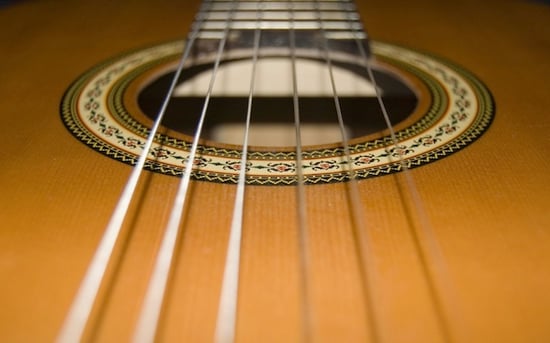 Image via bcachemistry.wordpress.com
Image via bcachemistry.wordpress.com
Strings play a very large roll in your guitar's performance, both in terms of their age and their quality. When my students tell me that their guitar is always going out of tune or that the tone sounds muddy, the first thing I ask them is always in regards to how old their strings are.
If you're somebody who plays guitar on a daily basis (playing regular uncoated strings), it's ideal to put new strings on every two to three weeks if you want the best tone and intonation your strings can give you. Many people put new strings on before every gig or recording session, which is a practice I also support. The key is making sure the strings are properly and thoroughly stretched, which can take practice and patience.
Different kinds of strings can also have a big effect on the sound of the instrument. Take some time to experiment between different brands of strings, coated versus uncoated strings, and different sizes of strings to see what sounds the best and feels most comfortable on your fingers.
5. Strap locks
 Image via mylespaul.com
Image via mylespaul.com
If you're an actively gigging musician, this is a no-brainer. Having your instrument take a tumble onstage is beyond disappointing. The sooner you put strap locks on the instrument, the sooner you can stop worrying about it.
If you're anxious about drilling new strap buttons into your guitar, Planet Waves has been making a strap that locks on the strap side that might be worth considering, though from what I can tell, it seems much less secure than the full strap-lock upgrade.
6. Case
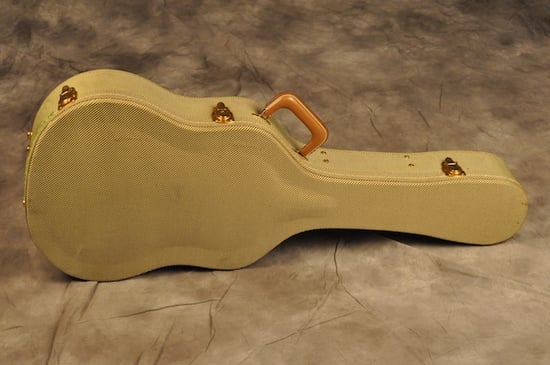 Image via scottysvintageguitars.com
Image via scottysvintageguitars.com
Another great upgrade for the actively gigging musician. Of course, you want to make sure that whatever case you own can completely protect your guitar, but there are other factors to consider as well. Each case has its own weight, and if you take your time to try a few out, you can find cases that are lighter than others but protect just as well. Also consider the handle: if it's not comfortable on your hand, it's going to be very difficult to carry, especially if you have to walk a few blocks from the parking spot to the venue.
Some cases also have locks, which can be useful as a deterrent to anyone who wants to take a peek at what's inside. However, I wouldn't say this is essential, as anybody who really wants to get into the case could simply break the latch and open it up.
Now, learn how to save some of your tried-and-true gear that isn't as young as it used to be.
Dylan Welsh is a freelance musician and music journalist, based in Seattle, WA. He currently plays in multiple Seattle bands, interns at Mirror Sound Studio, and writes for the Sonicbids blog. Visit his website for more information.







